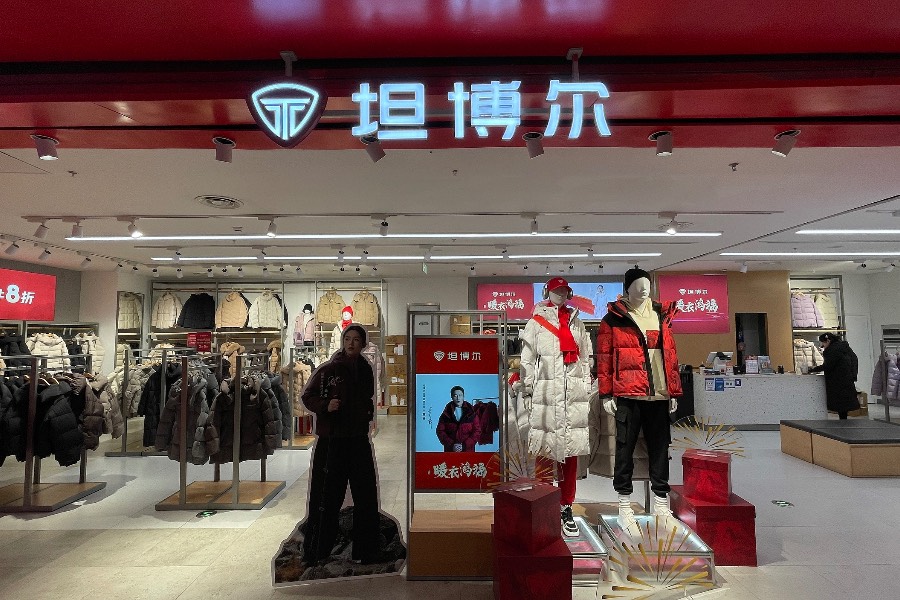Apparel maker Tanboer seeks fashionability from buoyant IPO market

The company has filed to list in Hong Kong, boasting strong growth and chasing healthy investor appetite for new stocks despite limited appetite for lower tech plays
Key Takeaways:
- Outdoor clothing maker Tanboer has filed to list in Hong Kong, reporting its net profit surged over 200% in the first half of this year
- The company’s e-commerce sales posted explosive growth this year, propelling them past traditional brick-and-mortar channels for the first time
By Cheng Shui Tong
Who says ordinary clothes can’t be refashioned into something sexier?
Not Tanboer Group Co. Ltd., which is hoping to leverage one of Hong Kong’s hottest IPO markets in years to attract investors to its outdoor clothing story. Though harkening from the old-economy apparel sector, which lacks buzzworthy themes like pharmaceuticals, technology, and artificial intelligence (AI) that typically drive IPO hype, the company could still draw solid interest thanks to a hot market and its equally hot growth.
Chinese consumers are relatively new to outdoor clothing, which has only come into fashion in the last decade with rising disposable incomes to spend on rugged activities like skiing and mountaineering. In the early stages, such apparel was associated almost exclusively with foreign names like North Face, with consumers largely dismissing domestic brands.
But a growing number of domestic names like Tanboer are trying to cash in on the outdoor craze, spending heavily on product development and aggressive marketing to catch up for lost time. By last year, half of China’s top 10 specialized outdoor apparel spots belonged to homegrown names — with Tanboer ranking seventh nationwide.
Financial surge
Tanboer is coming to market after turning in a dazzling first half of 2025. Its revenue rose 85% to 658 million yuan ($92.48 million) in the six-month period, while its profit tripled to 35.94 million yuan. Investor focus is now shifting to the upcoming winter season — a critical period for the company that will dictate whether it can keep up its rapid growth.
The strong start to 2025 comes after Tanboer reported its revenue grew by a slower 27% for all 2024 to 1.3 billion yuan. Its annual net profit actually fell 23% to 107 million yuan last year, dragged down by a marketing splurge that saw spending in that area rise 43% year-on-year to 508 million yuan. Aggressive advertising, omnichannel promotions and added headcount to the company’s sales teams pushed up both commercial costs and compensation expenses.
The company’s gross margins have historically hovered in the 50% to 60% range. They continued in that zone this year, though the figure fell to 54.2% in the first half of 2025 from 59.8% a year earlier. Some of that erosion owed to rising raw material prices. Premium goose down prices have risen from 621 yuan/kilogram in 2021 to 1,102 yuan/kilogram last year, while duck down rose from 369 yuan/kilogram to 500 yuan/kilogram over that time. The company estimates that every 5% increase in its input costs not only undermines its gross margins, but also saps its pretax profits by approximately 9.5 million yuan.
Online channels overtake offline
Despite its brick-and-mortar origins, Tanboer has recorded breakneck expansion for its online sales, which soared 80% to 626 million yuan last year. That momentum accelerated even more this year, as online sales rose 168.5% year-on-year to 347 million yuan in the first half of 2025. That growth raised online channels to 52.7% of the company’s overall revenues, pushing them past traditional offline channels for the first time.
The growth owes partly to development of a strong online sales network, including presences on most major e-commerce channels such as Tmall, JD.com, Kuaishou, Douyin, and WeChat mini-programs. The company complements that using collaborations with over 150 key opinion leaders (KOLs) to generate buzz around its products.
At the same time, the company is consolidating its traditional brick-and-mortar network as more people shop online. Its company-owned stores contracted to 257 at end-June 2025 from 278 at the end of 2024, while its number of distributor-operated locations shrank from 330 to 311 over that time.
Fragmented landscape
China’s outdoor clothing market remains hyper-competitive, and also quite fragmented, with the top 10 players controlling just 24.3% of the specialized apparel segment. The current category leader holds a modest 3.92% slice, while Tanboer’s is the seventh largest with 1.54% share, according to 2024 rankings.
The company has been in a regular state of transformation in its more than two decades of history, in lockstep with rapid changes in China as its economy grew at breakneck speed to become the world’s second largest. Founders Wang Yongping and Wang Lili began their apparel journey by acquiring a Sino-U.S. joint venture footwear maker in the city of Qingzhou of Shandong province in 1999. They took advantage of difficulties at a major down factory around that time to hire away 300 skilled technicians and pivoted to down apparel production.
The company formally incorporated in 2004 as a maker of low-cost down clothing. But pressured by competition as many others flocked to the space, it has more recently developed three labels spanning mid-tier to premium price brackets of 700 to 3,300 yuan per item. Those three lines are its Urban Expedition Series, its Performance Outdoor Series, and its flagship Elite Performance Series.
Elite Performance is the priciest of the three, with items often selling for 1,000 yuan or more. But that series brought in less than 5% of revenue in the first half of this year. The more mass-market Urban Expedition Series was the company’s big breadwinner, earning 68.2% of sales for the period.
A good peer comparison for Tanboer could be Hong Kong-listed Bosideng International (3998.HK), whose stock is up about 17% this year and has a current market value of HK$50 billion ($6.4 billion), giving it a trailing price-to-earnings (P/E) ratio of 13 times and a 2.9 price-to-book (P/B) ratio. But Bosideng is much larger, reporting revenue of 25.9 billion yuan and a net profit of 3.5 billion yuan for its latest fiscal year through March 2025.
Tanboer’s IPO may do well if seeks valuation levels substantially below Bosideng’s benchmarks. Meanwhile, its relatively small market value could make it attractive to speculators, creating a likable combination that should ensure strong interest for investors in the current hot IPO market.
To subscribe to Bamboo Works weekly free newsletter, click here





